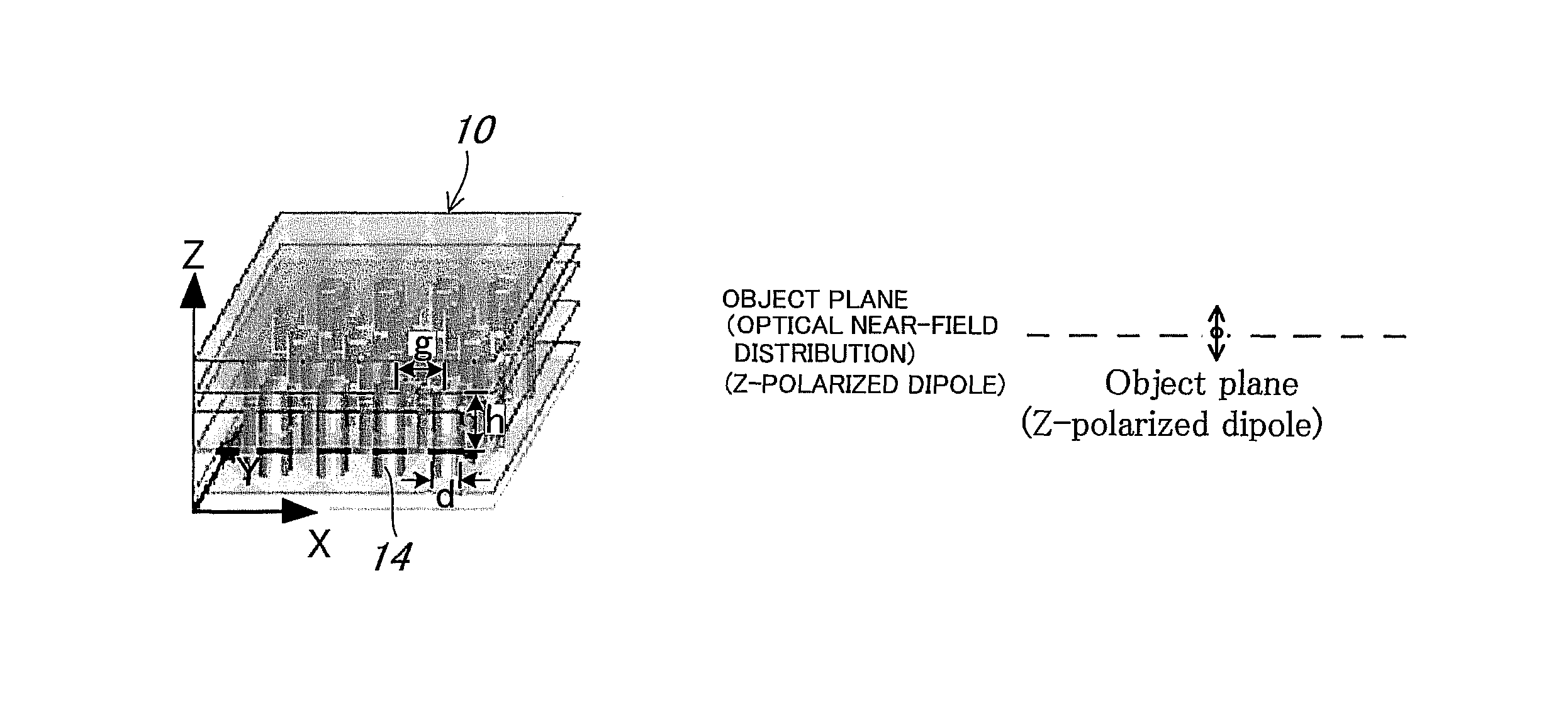Optical near-field distribution transfer device
a transfer device and optical near-field technology, applied in the direction of optical elements, scanning probe techniques, instruments, etc., can solve the problems of limiting resolution, difficult to obtain a spatial resolution exceeding wavelength order by means of a usual microscopical technique, and nsom is not suitable for the use of transfer, etc., to achieve the effect of exceeding the limit of resolving power
- Summary
- Abstract
- Description
- Claims
- Application Information
AI Technical Summary
Benefits of technology
Problems solved by technology
Method used
Image
Examples
Embodiment Construction
[0061]In the following, an example of embodiments of the optical near-field distribution transfer device according to the present invention will be described in detail by referring to the accompanying drawings.
[0062]First, FIG. 3 is a conceptual, structural, perspective view for explaining a first embodiment of the optical near-field distribution transfer device according to the present invention.
[0063]An optical near-field distribution transfer device 10 is constituted in such that a plurality of, for example, columnar solid small rods 14 made of silver (Ag), each of which has a diameter d of a nanometer order (e.g. 20 nm) and a length h in the axial direction (a height along Z-direction) of a nanometer order (e.g. 50 nm) in the surrounding medium 12 such as a dielectric material, and a semiconductor having a dielectric constant ∈d is “∈d≧1”, are erected at predetermined spacing g (the spacing g corresponds to a distance within which an electric field emerging from a small rod 14 d...
PUM
 Login to View More
Login to View More Abstract
Description
Claims
Application Information
 Login to View More
Login to View More - R&D
- Intellectual Property
- Life Sciences
- Materials
- Tech Scout
- Unparalleled Data Quality
- Higher Quality Content
- 60% Fewer Hallucinations
Browse by: Latest US Patents, China's latest patents, Technical Efficacy Thesaurus, Application Domain, Technology Topic, Popular Technical Reports.
© 2025 PatSnap. All rights reserved.Legal|Privacy policy|Modern Slavery Act Transparency Statement|Sitemap|About US| Contact US: help@patsnap.com



